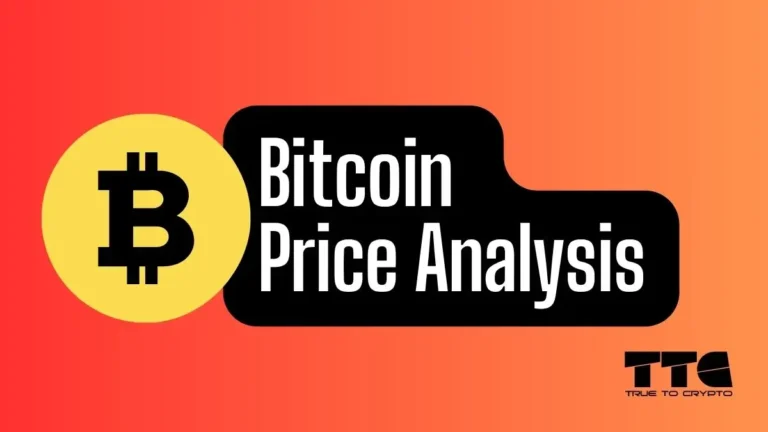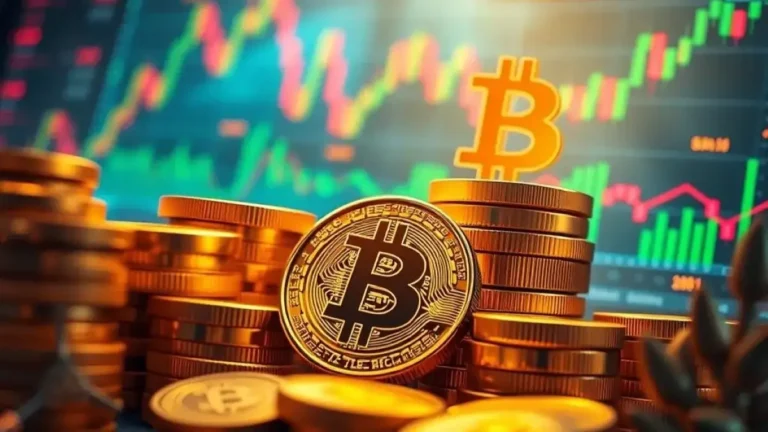Table of Contents
Uniswap has solidified its place as a linchpin of decentralized finance (DeFi) on the Ethereum blockchain, revolutionizing how users trade cryptocurrencies without intermediaries.With Ethereum priced at ~$1,900 and the broader crypto market cap hovering near $2 trillion, Uniswap stands as the top decentralized exchange (DEX) by trading volume, processing $1.8 billion daily, according to DeFiLlama. Since its launch in 2018 by founder Hayden Adams, this open-source protocol has empowered millions to swap tokens, provide liquidity, and participate in DeFi—all without a central authority. This comprehensive guide explores what Uniswap is, how it operates, its evolution, and why it’s a cornerstone of Ethereum’s ecosystem, drawing insights from industry data and resources.
What Is Uniswap? The Basics Explained
Uniswap is a decentralized exchange built on Ethereum, enabling users to trade ERC-20 tokens—digital assets adhering to Ethereum’s standard—directly from their wallets. Unlike centralized exchanges (CEXs) such as Binance or Coinbase, which custody user funds and match buy/sell orders via an order book, Uniswap eliminates intermediaries. Instead, it relies on smart contracts—self-executing code on the blockchain—to facilitate peer-to-peer swaps. Launched on November 2, 2018, by Adams, a former Siemens mechanical engineer, Uniswap introduced an automated market maker (AMM) model, replacing traditional market-making with liquidity pools.
For beginners, think of Uniswap as a blockchain-based vending machine. Users connect wallets like MetaMask or Coinbase Wallet to its interface (app.uniswap.org) to swap tokens—say, exchanging 1 ETH for USDC—or deposit token pairs to earn fees. With a total value locked (TVL) of $3.2 billion and a lifetime trading volume of $1.2 trillion across 135 million trades, per Uniswap Labs, it’s the go-to DEX for Ethereum users. Its governance token, UNI, launched in September 2020, trades at $7.89 with a $4.7 billion market cap as of March 31, 2025, giving holders a say in protocol upgrades.
How Does Uniswap Work? A Step-by-Step Breakdown
Uniswap’s mechanics hinge on its AMM system, a departure from the order book model. Here’s how it functions:
- Initiating a Swap: Users visit Uniswap’s interface, connect a wallet, and select a token pair—e.g., ETH to USDC.
- Pricing via AMM: The protocol uses the formula x * y = k, where ‘x’ and ‘y’ are the reserves of two tokens in a pool, and ‘k’ is a constant. If a pool holds 10 ETH and 26,300 USDC, swapping 1 ETH adjusts the ratio, yielding slightly less USDC due to slippage—price shifts from pool size changes.
- Fees and Execution: A 0.3% fee applies—0.25% goes to liquidity providers (LPs), 0.05% to UNI holders post-V4 (in development). The transaction settles on Ethereum, costing 4 gwei ($0.12) at current gas lows, confirmed in minutes.
- Liquidity Pools: LPs deposit equal values of two tokens—e.g., $1,000 ETH and $1,000 USDC—into pools, earning fees per trade. V3’s concentrated liquidity lets LPs set price ranges (e.g., $2,500-$2,800), optimizing returns.
Smart contracts automate this, ensuring trustless execution. Over 400,000 wallets have provided liquidity since 2018, per Dune Analytics, making Uniswap a community-driven marketplace.
The Evolution of Uniswap: From V1 to V4
Uniswap’s journey reflects DeFi’s rapid growth:
- V1 (2018): Launched with a $15,000 Ethereum Foundation grant, V1 allowed ETH-to-ERC-20 swaps via a basic AMM. It processed $6 million in volume its first year—modest but groundbreaking.
- V2 (2020): Introduced token-to-token swaps (e.g., USDC to DAI), bypassing ETH conversions, and added flash swaps for arbitrage. Volume soared to $50 billion annually, per Messari.
- V3 (2021): Debuted concentrated liquidity, boosting capital efficiency—LPs could earn 10x more fees than V2 on stablecoin pairs, per Uniswap Labs. TVL hit $10 billion at its 2021 peak.
- V4 (In Development, 2025): Set for post-Merge Ethereum, V4 promises custom pool logic, lower gas costs via hooks, and UNI fee staking—pending governance approval. A testnet launched in 2024 hints at a Q3 rollout.
Each version has cemented Uniswap’s edge, outpacing rivals like SushiSwap ($400 million TVL) and Curve ($1.1 billion), handling 60% of Ethereum DEX volume.
Why Uniswap Matters in 2025
Uniswap’s dominance stems from Ethereum’s $316 billion market cap and DeFi’s $92 billion TVL. Bitcoin’s ~$84,000 price and Q1’s 12.7% drop grab headlines, but Ethereum’s ecosystem—2.8 million ETH ($7.35 billion) staked since Shapella—powers Uniswap. It processed $1.2 trillion in 2024 stablecoin volume (35% of $35 trillion total), dwarfing PayPal’s $1.5 trillion. Trump’s March 6 Bitcoin reserve order and Hut 8’s American Bitcoin Corp. launch boost crypto, yet Uniswap’s decentralized ethos shines amid Binance’s USDT halt in Europe under MiCA rules.
For users, Uniswap offers:
- Accessibility: No KYC—just a wallet and ETH for gas. A $100 swap costs $0.30 versus Binance’s $0.75.
- Control: Non-custodial design keeps funds in user hands, unlike CEX hacks (e.g., ByBit’s $1.5 billion loss in 2024).
- Innovation: V3’s NFT positions, traded on OpenSea, and mobile app (2023) broaden reach.
South Korea’s Upbit profit surge and Gate.io’s Red Bull F1 deal tie crypto to mainstream adoption, but Uniswap’s 1.6 million daily Ethereum transactions—10% via its pools—signal staying power.
Key Features and Benefits
Uniswap’s appeal lies in its features:
- Liquidity Pools: Anyone can contribute, democratizing market-making. Over $3.2 billion is locked across 50,000+ pools.
- Low Fees: 0.3% beats CEXs’ 0.5-1%, with no withdrawal charges.
- Token Variety: Supports thousands of ERC-20s—USDC, DAI, WETH—unlike CEXs’ curated lists.
- Transparency: Open-source code, forked by SushiSwap, fosters trust and innovation.
- Layer-2 Scaling: Post-Dencun (2024), Arbitrum and Optimism handle 60% of rollup volume, slashing costs—$0.05 swaps versus $20 peaks.
For beginners, it’s a DeFi entry point—swap $10 or stake $10,000 with ease. Posts on X from March 31 laud its simplicity: “Uniswap’s UI is DeFi’s gold standard.”
Risks and Challenges
Uniswap isn’t flawless:
- Gas Costs: Ethereum’s fees spike in bull runs—$20+ in 2021—though 4 gwei today eases pain.
- Impermanent Loss (IL): LPs risk losses if prices diverge—e.g., a 20% ETH jump cuts returns versus holding, per DeFi Pulse.
- Security: Audited since 2020, but forks like SushiSwap lost $6 million in 2022 to bugs.
- Regulation: South Korea’s 17-exchange ban and MiCA’s stablecoin rules don’t directly hit Uniswap, but Ethereum’s ecosystem feels the heat—ETH/BTC at 0.0323 nears a bottom, per Glassnode.
- Slippage: Small pools mean higher slippage—swapping $10,000 in a $50,000 pool shifts prices 5-10%.
Newbies must weigh these against benefits, using tools like etherscan.io to check pool health.
Uniswap vs. Competitors
Uniswap leads Ethereum DEXs, but rivals exist:
- SushiSwap: Forked Uniswap V2 in 2020, offering SUSHI rewards—$400 million TVL trails Uniswap’s $3.2 billion.
- Curve: Focuses on stablecoin swaps, with $1.1 billion TVL and lower slippage—less versatile than Uniswap.
- PancakeSwap: Binance Smart Chain’s top DEX, $2.5 billion TVL, but lacks Ethereum’s depth.
Uniswap’s 60% volume share and open-source ethos—forked by 50+ projects—set it apart, bolstered by Ethereum’s 120,000 daily active addresses.
Getting Started with Uniswap
For beginners:
- Set Up a Wallet: Download MetaMask, fund it with ETH ($5-$10 covers gas).
- Visit Uniswap: Go to app.uniswap.org, connect your wallet.
- Swap Tokens: Select ETH to USDC, input amount, confirm—done in minutes.
- Provide Liquidity: Deposit a pair (e.g., ETH/DAI), track fees via the app.
The Future of Uniswap
Uniswap’s V4, in testnet since 2024, promises lower gas via hooks and UNI staking—10% fee proposals await votes. Ethereum’s Dencun upgrade slashed rollup costs, boosting Uniswap’s layer-2 use. OpenAI’s $40B raise and Fidelity’s BTC acceleration note signal tech-crypto synergy, yet ETH’s four red months test altcoins. With $1.8 billion daily volume and a $92 billion DeFi TVL, Uniswap’s future hinges on Ethereum’s rebound.
Disclaimer: The information provided on or accessed through TrueToCrypto.com (the “Website”) is for general informational purposes only and is obtained from independent sources that are believed to be reliable. However, TrueToCrypto.com, its owners, affiliates, officers, employees, and agents (collectively, “We,” “Us,” or “Our”) make no representations or warranties, express or implied, as to the accuracy, completeness, timeliness, reliability, or suitability of the information contained on or accessed through this Website. Further read Disclaimer.








